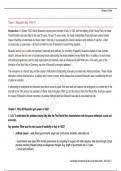Scheme of Work
Theme 1: Mussolini’s Italy, 1919–41
Introduction: In October 1922, Benito Mussolini became prime minister of Italy. In 1925, with the backing of his Fascist Party, he made
himself dictator and ruled Italy for the next 20 years. Yet just 75 years earlier, the newly unified state of Italy had been created amidst
hopes of building a modernised and liberal nation. Ironically, it was arguably the liberals’ decisions and methods of rule that – either
unconsciously or consciously – did much to make the rise of Mussolini’s Fascist Party possible.
Mussolini and his fascist state are important, historically and politically, for a number of reasons. Mussolini claimed to have invented
fascism, and was the first ruler of a single-party fascist state during the period between the two World Wars. In addition, his early ideas
and political programmes, and his party organisation and methods, were all influences on Adolf Hitler who, in the early years of the
formation of his Nazi Party in Germany, was one of Mussolini’s strongest admirers.
The emergence of a fascist Italy, and the creation of Mussolini’s dictatorship, have also provoked many historical debates. These include
attempts to define what fascism is, to explain why it came to power, and to assess how successful Mussolini was in establishing the kind
of state he intended.
In attempting to understand why Mussolini was able to come to power, this case study will examine the emergence of a united Italy in the
last half of the 19th century, the operation of ‘liberal’ Italy in the years 1900–22, and the impact of the First World War. It will also explore
the nature of Mussolini’s fascist movement, its political methods and how Mussolini was able to consolidate his rule.
Chapter 1: Why did Mussolini gain power in 1922?
1.1 LO: To understand the problems facing Italy after the First World War: dissatisfaction with the peace settlement; social and
economic.
Key question: What was the main cause of instability in Italy in 1922?
• political causes - weak liberal governments/ anger over communists, socialists, nationalists etc.
- Governments were weak, MPs formed governments by competing for support with other deputies, often done through corrupt
practices meaning frequent change as allegiances changed; Avg. length of government was 1.8 years
- Corrupt and inefficient
Cambridge International AS & A Level History 9489 – from 2021 1
, Scheme of Work Theme 1: Mussolini’s Italy, 1919–41
7
- Transformismo (to alternate political control): MPs fought amongst each other and used bribery to get their way, forming weak
coalitions which often collapsed
- The 1919 elections had used PR (proportional representation) and universal male suffrage for the first time. The Liberals were
divided over the role of Giolitti, and the Socialists and the new Catholic (Popolari or PPI) Party did well under the new electoral
system. The resultant coalition government was weak and struggled to deal with its many problems.
proportional representation: A method of voting whereby each party gains representation in parliament to a greater or lesser
extent, according to the proportion of the total votes it receives in an election.
Popolari or PPI (a coalition of conservative and liberal Catholics who wanted to defend Catholic interests and improve life for the
peasants )
social causes - fear of socialist revolution/ strikes, riots/ North-south divide worsened
- Few Italians had confidence in system; constant threat of rebellion; Middle-class Italians and conservatives, fearful of a socialist
revolution, expected the authorities to deal harshly with the workers, but the government, in their view, failed to respond decisively.
- Inflation led to food shortages and even food riots in Turin in 1917. Social unrest amongst industrial workers and peasants grew
steadily by 1918
- North south divide worsened:
o Industries linked to war production (steel, chemicals, motor production, etc.) did very well before 1918 as guaranteed large
state contracts and inflation not an issue as could raise prices in correspondence
o Companies such as Fiat remained successful to the point where it became the largest car manufacturer in Europe
o South = predominantly agricultural and couldn’t share in prosperity; farming was negatively hit by conscription in large
numbers; to prevent spread of Bolshevism govt. promised programme of land reform for after the war
o The southerners had found it hard to fight at the north-eastern border for the sake of a few Italian speaking towns
economic causes - cost of war very high/ unemployment/ govt. debt/ inflation/
Cambridge International AS & A Level History 9489 – from 2021 2




